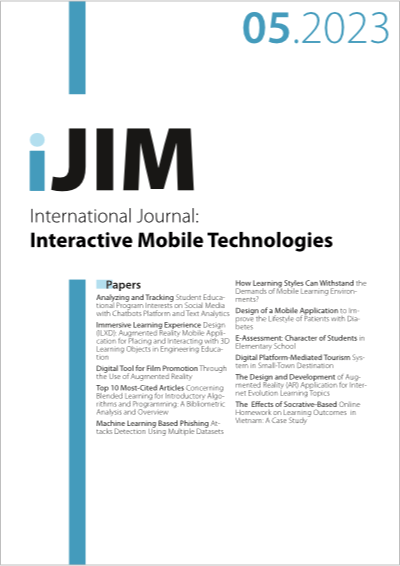Analyzing and Tracking Student Educational Program Interests on Social Media with Chatbots Platform and Text Analytics
DOI:
https://doi.org/10.3991/ijim.v17i05.31593Keywords:
Applied Informatics, Text Analytics, Educational Data Mining, Eruptive Technology, Technology-Enhanced LearningAbstract
This research presents a chatbot application to provide educational information for university students. There are three objectives: 1) to study the problem of providing information to university students with chatbots, 2) to develop a model and construct a chatbot to predict the interest of university students, and 3) to assess the satisfaction of the information provided by the chatbot application. The research datasets were the conversations from the Messenger Facebook Page of the Faculty of Information Technology, Rajabhat Maha Sarakham University, during the academic year 2020-2021. In total, there were 1,094 transactions used in this research work. Furthermore, data mining and machine learning techniques, including CRISP-DM, Naïve Bayes, K-Nearest Neighbors, and Neural Network, were used as the research tools. The cross-validation and confusion matrix techniques were used to test the model performance. Moreover, a questionnaire was the application satisfaction assessment tool for 30 respondents. As a result, it showed that the developed model provided high-level results, which are 88.73% accuracy and an average of 3.97 for application satisfaction. In the future, the researchers plan to apply the results for the next academic year and expand into other academic programs.
Downloads
Published
How to Cite
Issue
Section
License
Copyright (c) 2023 Patchara Nasa-Ngium, Wongpanya Sararat Nuankaew, Pratya Nuankaew

This work is licensed under a Creative Commons Attribution 4.0 International License.



